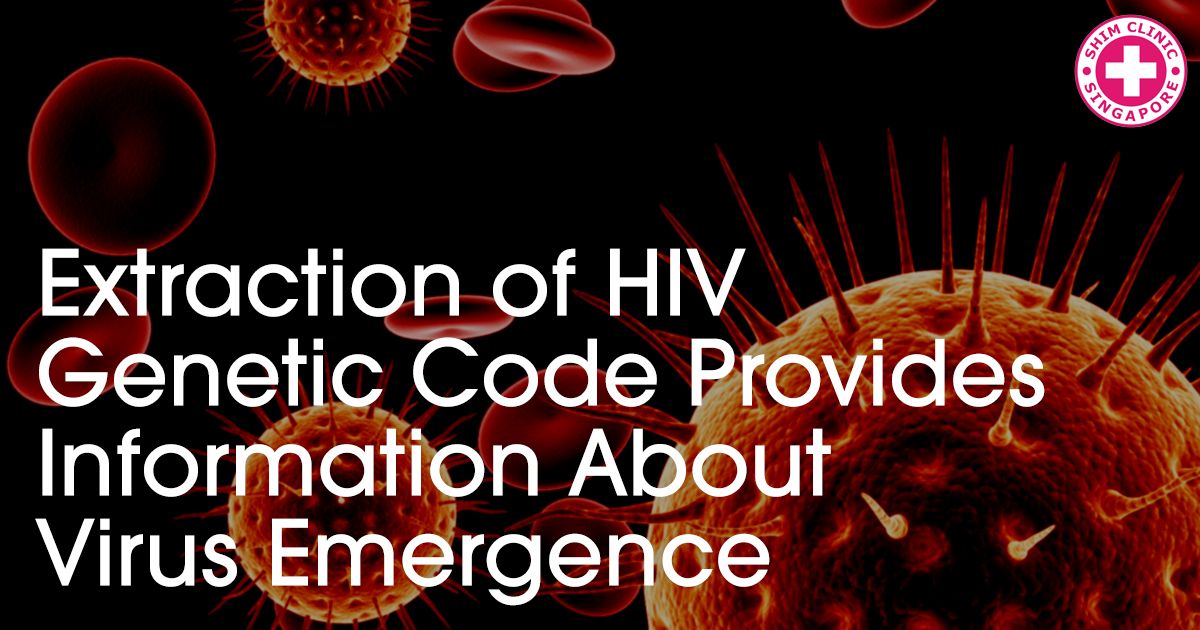A tissue sample dating back to the 1960s has provided scientists with invaluable information about the HIV virus and its origin.
The sample was collected from a man in the Democratic Republic of Congo. A lymph node containing RNA was sealed in paraffin and preserved to provide University of Arizona researchers today with the material needed to further their AIDS research.
Some of their findings are considered a breakthrough as they confirm theories that have been circling around for some time already.
HIV Has Been Infecting Humans Since the Early 1900s
University of Arizona researchers recovered nearly the entire genetic code of the HIV virus from the tissue sample. This information shows that the virus has been infecting humans since the first decade of the 20th century.
Few people understand the difficulty and the importance of the accomplishment. Infectious disease experts claim that generating the nearly complete viral genome from the old tissue sample is very technical and challenging. While the findings haven’t undergone the peer review process yet, they shed important information on the origin of HIV and the AIDS epidemic.
The genome sequence is older by a decade than a previous HIV sample examined. It shows that the HIV virus was circulating in Africa 15 years before unusual infections began affecting gay men in the US.
By studying genetic codes, researchers can pinpoint the time when the HIV virus moved from primates to humans. Before the new findings, there have been several estimates about the specific timeframe. Most researchers do focus on the early 1900s, particularly 1920 but there have been some other theories suggesting that the virus had already been affecting people in the late 1890s.
For the time being, the latest discovery supports theories focusing on the early 1900s and before 1920. Additional sample examination, however, will be required to confirm the information.
Getting a more precise idea about the origin of the HIV/AIDS pandemic is very important. Through such research, scientists can determine which factors played a role in the emergence of the virus among humans.
Where Did HIV Come from?
It’s already believed that HIV crossed from chimps to humans in the Democratic Republic of Congo. Chimps were carriers of the Simian Immunodeficiency Virus (SIV) – a virus that’s very closely related to HIV. SIV attacks the immune system and it has a number of additional characteristics that make it very similar to HIV.
Important scientific breakthrough came in 1999 when researchers found a strain of SIV in a chimpanzee. This strain was almost 100 per cent identical to the human immunodeficiency virus. Researchers then concluded that SIV was the source of HIV affecting humans.
But how exactly did the virus cross from apes to humans?
The most widely-accepted theory states that the transmission resulted from apes being hunted and eaten. Typically, the human immune system should have been capable of combatting SIV. Eventually, however, the virus adapted itself within the human host. This is how HIV-1 came into existence.
The Democratic Republic of Congo is known for having the biggest diversity of HIV strains out of all parts of the world. Few people know that different strains of the human immunodeficiency virus exist, most of them being categorized in four groups. This diversity also serves as evidence of the transmission from ape to human theory.
Each case of SIV that was passed to a human contributed to a slightly different reaction and the evolution of the virus into a specific type of HIV. Today, HIV-1 Group M is the most common variety of the virus and it is the one responsible for the vast majority of contemporary HIV infections.
HIV Evolves but so Does Science
Many people believe that HIV originated in the US in the 1970s and 80s. This is when the infection reached epidemic proportions.
At the time, a HIV infection quickly progressed to acquired immunodeficiency syndrome (AIDS). Life expectancy was approximately 12 years from the time of the infection occurring. Luckily, things have changed today.
Now, a newly-diagnosed HIV-positive individual can expect an average lifespan of 49 years on antiretroviral therapy. That’s a massive improvement since the 1980s.
In addition, researchers have made it possible to prevent an infection, even when a person is exposed to HIV.
HIV PEP and HIV PrEP are utilized among high-risk groups to reduce the likelihood of an infection.
Post-exposure prophylaxis or PEP has to be administered within the first 72 hours of unprotected sex. The treatment has a high success rate (over 90 per cent) when administered immediately.
Pre-exposure prophylaxis or PrEP, as the name suggests, is administered before a high risk even occurs. It is recommended to individuals belonging to high risk groups like men who have sex with men, sex workers and individuals who engage in unprotected intercourse. HIV PrEP reduces the risk of an infection by 99 per cent when medications are taken regularly.
Access to HIV testing, other STD testing, PEP and PrEP is easy in Singapore. Shim Clinic is a private and confidential general practice clinic that focuses on sexual health and STIs. Testing (rapid process, results become available in 20 minutes), HIV treatment and counselling options are available.
Contact Shim Clinic to learn more about HIV, testing and treatment options. You can also visit us during our working hours every single day of the week.


Pingback: New HIV Strain Discovered for the First Time in Almost Two Decades
Pingback: A Timeline of the HIV Crisis: The Scary 1980s and 1990s
Pingback: Breakthrough Research: New Medication Prevents HIV Transmission from Mother to Baby